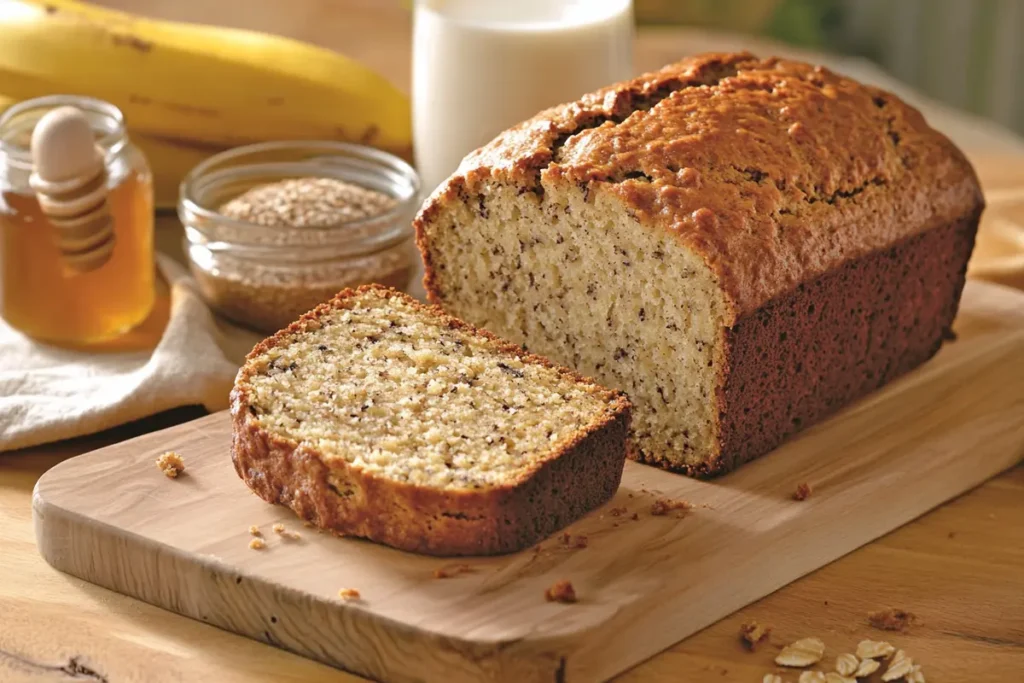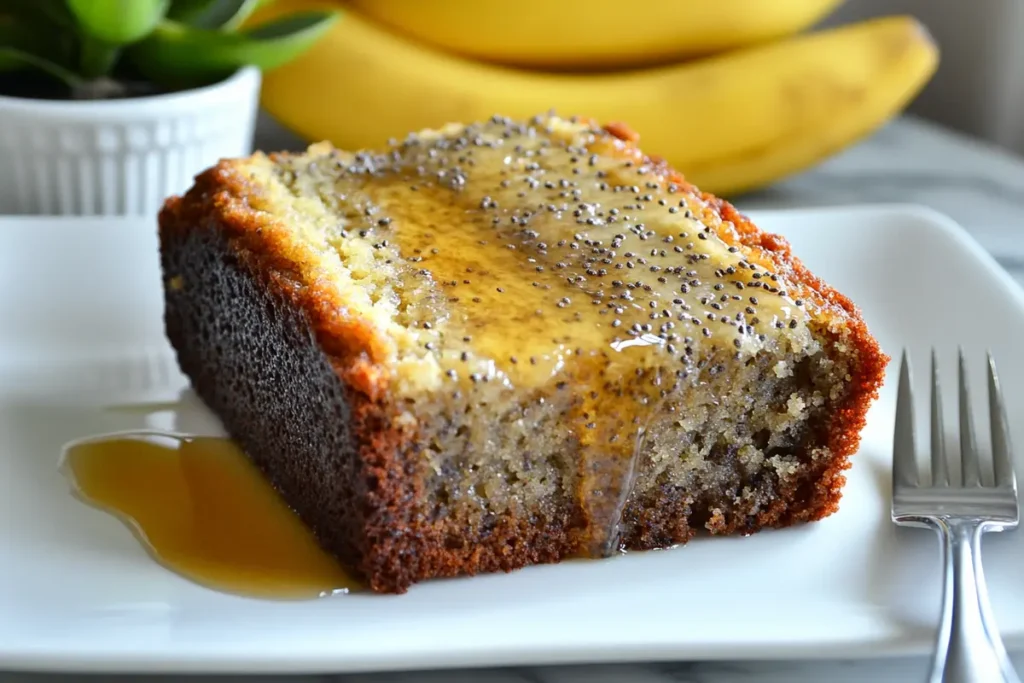Banana bread is a beloved treat worldwide, cherished for its sweet flavor, moist texture, and versatility. But beyond its delightful taste, many people wonder about its nutritional benefits, particularly when it comes to carbohydrates. So, is banana bread a good source of carbs? In this article, we’ll dive into the nutritional makeup of banana bread, its role in your diet, and how to make it a healthier choice.

What Are Carbohydrates and Why Do We Need Them?
Carbohydrates are one of the three primary macronutrients, along with protein and fat. They serve as the body’s primary source of energy, fueling everything from your daily activities to high-intensity workouts. Carbs are broken down into glucose, which is either used immediately for energy or stored as glycogen in muscles and the liver.
Types of Carbohydrates:
- Simple Carbs: Found in sugars, fruits, and some processed foods.
- Complex Carbs: Found in whole grains, legumes, and vegetables, providing sustained energy and fiber.
Banana bread contains both simple and complex carbohydrates, primarily from ingredients like bananas, flour, and sugar. Let’s break down the components to assess if it’s a good source of carbs.
Nutritional Breakdown of Banana Bread
The exact carbohydrate content of banana bread depends on the recipe, but here’s an approximation for a standard slice (about 60g):
- Carbohydrates: 35-40g
- Sugars: 15-20g
- Fiber: 1-2g
This shows that banana bread is predominantly made up of carbs. Here’s a closer look at where these carbs come from:
- Bananas: A natural source of simple carbs and sugars, bananas also provide essential nutrients like potassium, vitamin B6, and vitamin C.
- Flour: Typically made from refined wheat, flour is a source of complex carbs but lacks fiber compared to whole-grain options.
- Sugar: Most recipes include added sugar, which contributes to the total carb content as simple sugars.
- Optional Add-Ins: Ingredients like chocolate chips or dried fruits can further increase the carbohydrate content.
Is Banana Bread a Good Source of Carbs?
The answer depends on your nutritional goals and the context of your diet. Let’s explore the pros and cons.
The Pros:
- Quick Energy Boost: Thanks to its high carb content, banana bread can provide a quick source of energy, making it ideal for athletes or active individuals needing a pre-workout snack.
- Nutrient-Rich Ingredients: When made with wholesome ingredients like ripe bananas, whole-grain flour, and minimal added sugar, banana bread can deliver vitamins, minerals, and dietary fiber.
- Customizable Recipes: You can control the type and amount of carbs by modifying the recipe (e.g., using almond flour or reducing sugar).
The Cons:
- High in Simple Sugars: Traditional banana bread recipes often contain a lot of added sugar, which can lead to blood sugar spikes.
- Low Fiber Content: Unless you use whole-grain or alternative flours, banana bread typically lacks the fiber needed to slow down carbohydrate absorption and promote digestive health.
- Calorie Dense: The combination of carbs with added fats (like butter or oil) can make banana bread high in calories, which may not be ideal for those watching their weight.
The Role of Banana Bread in a Balanced Diet
If you’re wondering whether banana bread can be part of a healthy diet, the answer is yes—but moderation and balance are key.
Who Can Benefit from Banana Bread as a Carb Source?
- Active Individuals: Banana bread can be a quick and convenient source of carbs for athletes or anyone needing energy replenishment after exercise.
- Busy Professionals: A slice of banana bread paired with a source of protein, like Greek yogurt, can serve as a balanced breakfast or snack on the go.
- Kids and Teens: As a naturally sweet treat, banana bread can be a better alternative to highly processed snacks, especially when made with wholesome ingredients.
Who Should Be Cautious?
- Diabetics: The high sugar content can cause blood sugar spikes. Opt for recipes with less sugar or alternative sweeteners.
- Those on Low-Carb Diets: For individuals following ketogenic or low-carb diets, traditional banana bread may not fit their macronutrient goals.
- Weight Watchers: Keep an eye on portion sizes to prevent overconsumption of calories and carbs.
How to Make Banana Bread a Healthier Source of Carbs

To enhance the nutritional profile of banana bread and make it a better source of carbs, consider these modifications:
1. Use Whole-Grain or Alternative Flours
Replace refined white flour with:
- Whole Wheat Flour: Adds fiber and nutrients.
- Almond or Coconut Flour: Low-carb and gluten-free options for those with specific dietary needs.
2. Reduce Added Sugar
Cut down on added sugars by relying on the natural sweetness of ripe bananas. You can also use alternatives like:
- Honey
- Maple syrup
- Stevia
3. Add Fiber-Rich Ingredients
Boost the fiber content by adding:
- Oats or oat flour
- Flaxseeds or chia seeds
- Nuts and seeds
4. Incorporate Protein
Turn banana bread into a more balanced snack by adding:
- Greek yogurt to the batter
- Protein powder
- Nut butter as a topping
5. Watch the Portion Size
Stick to one slice per serving and pair it with protein or healthy fats to slow down carbohydrate absorption and keep you full longer.
Comparing Banana Bread to Other Carb Sources
Let’s see how banana bread stacks up against other common carb sources:
| Food Item | Carbs (per serving) | Fiber | Sugars |
|---|---|---|---|
| Banana Bread | 35-40g | 1-2g | 15-20g |
| Whole Wheat Bread | 15-20g | 3-5g | 2-5g |
| Oatmeal | 27-30g | 4-5g | 0g (unsweetened) |
| Brown Rice | 45g | 2-3g | 0g |
| Granola Bars | 20-30g | 2-4g | 10-15g |
While banana bread is higher in carbs and sugars compared to some options, it can still be a viable choice when made with healthier ingredients.
FAQs About Banana Bread and Carbs
1. Can I eat banana bread on a low-carb diet?
Traditional banana bread is not low-carb due to its flour and sugar content. Opt for recipes using almond flour and natural sweeteners to lower the carb count.
2. How does banana bread compare to bananas as a carb source?
A medium banana contains about 27g of carbs and 3g of fiber, making it a more fiber-rich option. Banana bread, on the other hand, includes added sugars and flour, which increase the carb and calorie content.
3. Can banana bread help with post-workout recovery?
Yes, the carbs in banana bread can help replenish glycogen stores after exercise. Pair it with a protein source for optimal recovery.
4. Is store-bought banana bread a good choice?
Store-bought banana bread often contains more sugar, unhealthy fats, and preservatives. Homemade versions are usually healthier and customizable.
5. How can I make gluten-free banana bread?
Use gluten-free flours like almond, coconut, or oat flour, and ensure all other ingredients, like baking powder, are certified gluten-free.
Conclusion
So, is banana bread a good source of carbs? The answer is yes—when prepared thoughtfully. Banana bread provides quick energy from its carbohydrate content and can be enriched with nutrients through smart ingredient choices. While it’s not a low-carb food, it can be part of a balanced diet, especially when enjoyed in moderation. By making healthier swaps, banana bread can go from a sugary treat to a wholesome snack or breakfast option.
Whether you’re an athlete looking for an energy boost or someone seeking a delicious homemade treat, banana bread can satisfy your cravings while fueling your day. Try customizing your recipe today and enjoy the benefits of this classic favorite!